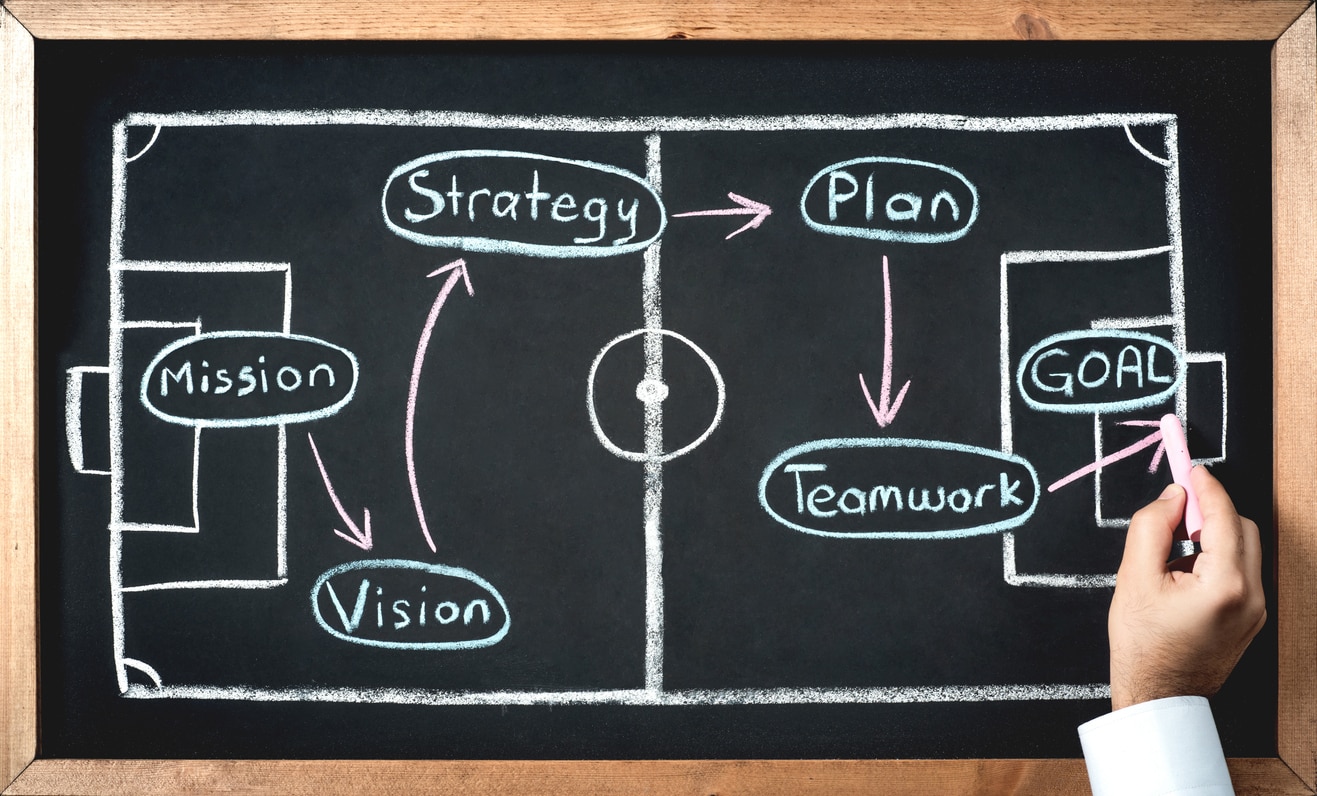- What is Supplier Relationship Management?
- Why is Supplier Relationship Management so Important?
- Benefits of Supplier Relationship Management
- Tasks of Supplier Relationship Management
- Supplier Relationship Management Process
- Supplier Relationship Management Strategies
- SRM Challenges Concerning India
- Supplier Relationship Management Examples
- Future Scope of Supplier Relationship Management
- Conclusion
If you’re enjoying a good meal in the comfort of your home, for example, a sandwich and a bottle of soft drink, have you ever thought about how all this comes together, or where did the shopkeeper get all these items at his retail shop? That’s where it comes down to supply chain management, and the critical factor to this relies on supplier relationship management.
Now think that you are the middle man between the suppliers and the retailers, and now it’s your responsibility to keep the supply smooth without any hindrances. As the middle man, what will you have to do to maximize the potential and have a competitive advantage over your competitors? This article is precisely about that and a whole lot more.
- What is Supplier Relationship Management?
- Importance of Supplier Relationship Management
- Benefits of Supplier Relationship Management
- Tasks of Supplier Relationship Management
- Supplier Relationship Management Process
- Supplier Relationship Management Strategies
- SRM Challenges Concerning India
- Supplier Relationship Management Examples
- Future Scope of Supplier Relationship Management
- Conclusion
What is Supplier Relationship Management?
Supplier relationship management (SRM) deals with and manages third-party suppliers who supply your company with goods, materials, and services. To optimize the value of the business relationship, you choose suppliers who are both cost-effective and easy to work with.
It’s far more intricate than that, as with most current corporate procedures. Because of technological advancements and the global scope of the economy, supplier management has seen a significant transformation in recent years. It’s challenging to find the best supplier when you have so many options, but applying innovative ideas to streamline your supplier management system might assist a lot.
Who is a Supplier?
A supplier is a company that provides goods or services to another company. The term is most commonly used in the business world, where businesses purchase raw materials or finished products from other businesses. A supplier can also be an individual, such as a freelance writer or graphic designer, who provides services or products to another individual or business. The term supplier is often used interchangeably with the vendor in the business world.
However, there is a distinction between the two terms. A vendor is a company that sells goods or services to another company without providing any additional services, such as installation or customer support. On the other hand, a supplier not only provides goods or services to another company but may also be involved in the manufacturing process or provide additional services, such as installation or customer support.
Why is Supplier Relationship Management so Important?
One can define success in business via relationships.
The importance of the supplier side is equal to that of the consumer side. At its most basic level, a company needs suppliers to provide resources for the products or services it sells and resources to manage the company.
The main benefit of having good, healthy supplier relationships is getting more value from your company. The better you know your suppliers and they know you, the more likely you will receive personalized service, discounted prices, and special conditions. Your supply chain will become more efficient, cost-effective, and productive due to this.
Supplier relationship management (SRM) is the proactive management of supplier relationships to improve quality, cost, delivery, and innovation performance. SRM goes beyond traditional procurement activities and includes supplier selection, supplier development, and supplier performance management. A successful SRM program requires a close partnership between the purchasing organization and its suppliers. The goal of SRM is to create a relationship in which both parties work together to improve the other’s performance. This partnership requires trust and mutual respect.
Impact of Supplier Relationship Management
SRM can have a significant impact on an organization’s bottom line. For example, SRM can help to reduce the cost of goods and services, improve quality, and increase innovation. In addition, SRM can help build and maintain relationships with strategic suppliers. These relationships can provide an organization with a competitive advantage. There are many benefits of SRM, but it is essential to remember that SRM is a long-term investment. SRM requires time, effort, and resources. It is essential to carefully consider whether SRM is the right decision for your organization.
Thinking about procurement other than the technicalities of buy agreements and contracts is necessary for building solid relationships with suppliers. The emphasis on how you engage with suppliers differs from supply chain management’s logistical focus.
It’s rarely as simple as signing a contract and sitting back while a procedure takes care of itself. People management and the added value that human aspects of the business may provide to operations are at the heart of supplier management. Keeping this side of things going well helps guarantee that the two sides work fast to handle concerns, search for ways to improve operations, and assist each other in reaping the benefits of the partnership.
Following are some of the ways to layout a good foundation for building better relationships with suppliers:
- Good communication
- Mutual respect
- Openness
- Fairness
- Trust
- Flexibility
Benefits of Supplier Relationship Management
1. Improved quality of goods and services
SRM can help to improve the quality of goods and services by establishing and maintaining relationships with high-performing suppliers. This can lead to improved communication and collaboration, which can, in turn, lead to better quality products and services.
2. Reduced costs
SRM can help reduce costs by negotiating better prices with suppliers and improving efficiencies in the supply chain.
3. Improved supplier performance
SRM can help to improve supplier performance by setting clear expectations and providing feedback on supplier performance. This can lead to improved communication and collaboration, which can, in turn, lead to better quality products and services.
4. Greater transparency and visibility
SRM can help to improve transparency and visibility into the supply chain by providing visibility into supplier performance and establishing clear communication channels.
5. Improved communication and collaboration
SRM can help improve communication and collaboration between a company and its suppliers, leading to improved quality products and services.
6. Greater innovation
SRM can help drive innovation by establishing relationships with creative and innovative suppliers. This can lead to new products and services that can help a company gain a competitive advantage.
7. Increased customer satisfaction
SRM can help to increase customer satisfaction by ensuring that customers receive the products and services they need when they need them.
8. Improved risk management
SRM can help improve risk management by identifying and mitigating risks in the supply chain. This can lead to improved quality products and services.
9. Greater agility
SRM can help to improve agility by establishing relationships with suppliers that are flexible and responsive to change. This can lead to improved quality products and services.
10. Improved business continuity
SRM can help improve business continuity by establishing reliable relationships with reliable suppliers and having a good track record. This can lead to improved quality products and services.
Tasks of Supplier Relationship Management
In supplier relationship management, defining, measuring, and improving supplier performance are vital to organizational success. By understanding supplier performance, an organization can determine which suppliers provide the best value and products and which ones need improvement. Additionally, supplier relationship management can help an organization improve its performance by streamlining processes and improving communication with suppliers.
To manage supplier relationships effectively, it is essential to understand supplier performance. Various factors can impact supplier performance, including quality, delivery, cost, and responsiveness. By measuring these factors, an organization can see which suppliers meet their expectations and which ones need improvement. Once you measure the supplier performance, it is essential to improve the performance of those suppliers who are not meeting expectations.
One can execute this through various methods, such as training, process improvement, process management, etc. Are you interested in learning more about process management? Enroll in process management course today and gain the skills you need to streamline processes and improve efficiency in your organization.
Additionally, it is essential to work with suppliers to identify areas where they can improve. By doing so, an organization can improve its performance by ensuring that its suppliers meet its needs.
Supplier Relationship Management Process
Planning, tracking, organizing partnerships, and optimizing processes are part of supplier relationship management. This allows for increased productivity and cost savings while retaining quality. Supplier relationship management must target operational, tactical, and strategic procedures between the organization and its vendors to be effective.
As a result, SRM must be adaptable and quickly respond to change. This is why the practice of the supplier relationship management process is so crucial. It has to be a two-way street that benefits both the corporation and its suppliers. Teamwork, creativity, and a competitive edge are required to make supplier relationship management work.
The following depicts an efficient SRM Process.
1. Supplier Segmentation
Create separate groups for your major suppliers, such as strategic, tactical, and tail vendors. Each of these supplier groups will require its management strategy, and each will necessitate a distinct strategy and set of resources.
The first run of your suppliers should reveal which ones will add the most value to your business. These are the suppliers who are crucial to the company’s success. These are usually the vendors you spend the most money with, but they might also be more minor but crucial suppliers who help you provide innovation.
Tactical suppliers are those from whom you buy frequently but have a limited budget. These are suppliers to whom you have other options. Any additional supplier that isn’t critical to your SRM process is a tail supplier.
2. Set Objectives
Having objectives is essential. Without objectives, the effort can be wasted following dead ends. However, those objectives can’t be plucked out of the blue sky, and they must be aligned with your overall business objectives. Whether your objective is cost savings, innovation, or saving time, you will need to determine how you set up your objectives for SRM. Every company will have a different business objective because each is different.
3. Measure Supplier Performance
You won’t be able to fulfill your goals if you don’t track your suppliers’ performance against them. As a result, evaluate the performance of your most essential supplier to see if it matches your goals. This entails keeping track of the metrics with your strategic and tactical vendors. The tail suppliers aren’t as significant as the head suppliers.
Compliance and on-time-in-full (OTIF) monitoring are only part of the picture of tracking performance. Delivery, product innovation, and how well they participate in answering client needs are just a few of the processes that determine value in your relationship with suppliers. Delivery performance, quality performance, service performance, corporate social responsibility performance, risk management status, and innovation skills are some of the measures to keep an eye on.
4. Create a Supplier Management Strategy
Create a strategy for staying in touch with suppliers and ensuring that they reach the goals you’ve set. This will aid in the enhancement of your company’s competitive advantage. This form of collaboration benefits both the organization and the supplier and assists in meeting the needs of the customers.
As a result, you want to be open and honest with your vendors. Inform them of your goals, explain your company operations, and share data on supplier performance with them. This will help to develop trust between your organization and the suppliers you work with and connect your interactions with them with your business goals.
Supplier input can often lead to unanticipated gains in concepts you had not anticipated.
The better you cooperate with your supplier, the more likely you will see improvements in supply availability, quality, and supply chain waste. There may also be creative concepts that provide a competitive advantage over market competitors.
5. Continue Improving
Your SRM must be examined and updated regularly as you interact with suppliers to keep costs low and creativity high. Schedule regular meetings with your suppliers to focus on their quality, delivery, performance, and service to develop improved supplier performance management. Sharing data and being clear about your company’s objectives in working with your suppliers are part of that strategy.
Supplier Relationship Management Strategies
With the impact on travel and worldwide supply networks, supplier management and supply chain management became even more vital than before during the COVID epidemic. Companies that prioritized strategic sourcing and strategic supplier relationship management fared substantially better during the storm.
They are two very unconventional approaches that management has regarding supplier relationships.
In an approach where firms only manage supplier relationships when problems arise, they strive to figure out how to enhance the performance of unreliable suppliers. This method consumes a significant amount of time and resources that could have been better spent on other critical business procedures. This kind of approach is known as a reactive approach.
Supplier relationship management begins before a contract with a supplier is signed to ensure the company’s long-term competitive advantage is known as the strategic approach. Key stakeholder input and long-term gain measures are implemented. This is a strategic, forward-thinking strategy that can lead to a successful partnership even in the early stages.
Regardless of industry, a strategic approach to supplier relationship management has always been critical to successful firms that rely on third-party suppliers.
Businesses can use supplier relationship management strategies to create a more efficient and effective working relationship with their suppliers. Here are four of those strategies:
SRM Strategies
1. Define the roles and responsibilities of each party. The first step to creating a more effective supplier relationship is defining each party’s roles and responsibilities. This will ensure that everyone understands their part in the relationship and what is expected of them.
2. Create a communication plan. It is crucial to have a communication plan to know how and when to communicate with each other. This plan should include who will be responsible for communicating, how often communication will occur, and what methods will be used (e.g., email, phone, in-person meetings, etc.).
3. Set performance expectations. For the relationship to be effective, it is essential to set performance expectations for both parties. This includes setting expectations for quality, delivery, and other essential factors to the business.
4. Foster a culture of collaboration. Finally, it is essential to create a culture of collaboration between the business and its suppliers. This can be done by encouraging open communication, mutual respect, and a focus on working together to achieve common goals.
SRM Challenges Concerning India
SRM faces several challenges, such as the country’s vast geographical size, the large number of suppliers, and the often-complex relationships between suppliers and buyers. Additionally, cultural differences can make communication and negotiation difficult.
The first challenge is the sheer size of India. The country is home to over 1.3 billion people, and its land area is nearly three times the size of the European Union. This vastness makes it challenging to manage the supply chain and keep track of suppliers. Additionally, the large number of suppliers can be overwhelming, and it can be challenging to build relationships with all of them.
The second challenge is the cultural differences between India and other countries. India has a very different culture from most Western countries, making communication and negotiation difficult. There are often language barriers, and different business customs can make it challenging to understand each other.
The third challenge is the often-complex relationships between suppliers and buyers. It is common for suppliers to be family-owned businesses in India, and there are often close personal relationships between buyers and sellers. This can make it difficult to manage supplier expectations and negotiate contracts. Despite these challenges, SRM is a vital process for organizations doing business in India. By streamlining the supply chain and improving communication with suppliers, organizations can improve their efficiency and bottom line.
Supplier Relationship Management Examples
Toyota is one of the few organizations with a strong reputation for supplier relationship management. Over several decades, the world’s largest automaker has built long-term, collaborative, and tight relationships with its leading Japanese suppliers.
Toyota views nearly all of its suppliers as strategic partners, and they approach them with the same vital values (encapsulated in our “Toyota Way” in purchasing). However, we can clearly distinguish between our strategic co-development partners and other suppliers in terms of the breadth of their activity, particularly in research and development.
Toyota thinks that doing business with a long-term, non-opportunistic mentality is an activity between human beings. Regular, transparent linkages from top to bottom are essential. Even terrible news or difficult decisions can be accepted in most cases if enough time is spent explaining the context and implications honestly. The feeling that one partner is seeking to maximize the relationship’s profit at the expense of the others must be avoided. For an indeterminate period of time, such an opportunistic attitude would sever confidence. We want to be recognised as a strategic customer in the same way that we see some of our partners as strategic. And to reach this, we must be perceived as loyal and reliable.
Future Scope of Supplier Relationship Management
In an increasingly digital and automated environment, the future of product and service delivery will be focused on becoming both tremendously efficient in operations and adaptable and adaptive to a changing customer landscape. Business models will have to adjust over time to the environment created by growing disruptive forces such as competition and technology and constant political, social, and economic developments.
As your marketplace, consumers, and organization evolve, your relationship with your suppliers will inevitably evolve.
When you have a good supplier relationship, you’ll be able to:
- Create an operational foundation for sustaining good working habits.
- Continual improvement and active relationship management are required to achieve the best possible results.
- Ensure that the correct people are involved in the process to maximize the relationship’s mutual and reciprocal value.
- Using the appropriate procedures and technology to achieve the desired results
- Adapt to shifting expectations
- Reduce the chances of failure by taking preemptive measures.
- Regularly, strive to illustrate and reiterate the significance of an effective partnership.
Conclusion
Healthy relationships in business can help your company or organization withstand and come out of any crisis that the company might face. It is also essential to understand that it is not only customer relationships that matter for a business to grow; having a healthy relationship with your suppliers can give you an edge over your competitors. These relationships are maintained by a customer relationships manager. If you want to become a customer relationship manager, you need to have excellent communication and interpersonal skills. You must be able to build rapport with customers and understand their needs. You should also be able to handle customer complaints and resolve issues efficiently. Additionally, you need to be well-organized and detail-oriented to manage customer data and keep track of customer interactions. If you have these skills and qualities, then you may have what it takes to be a successful customer relationship manager. One can use this as leverage to have better productivity and efficiency.









